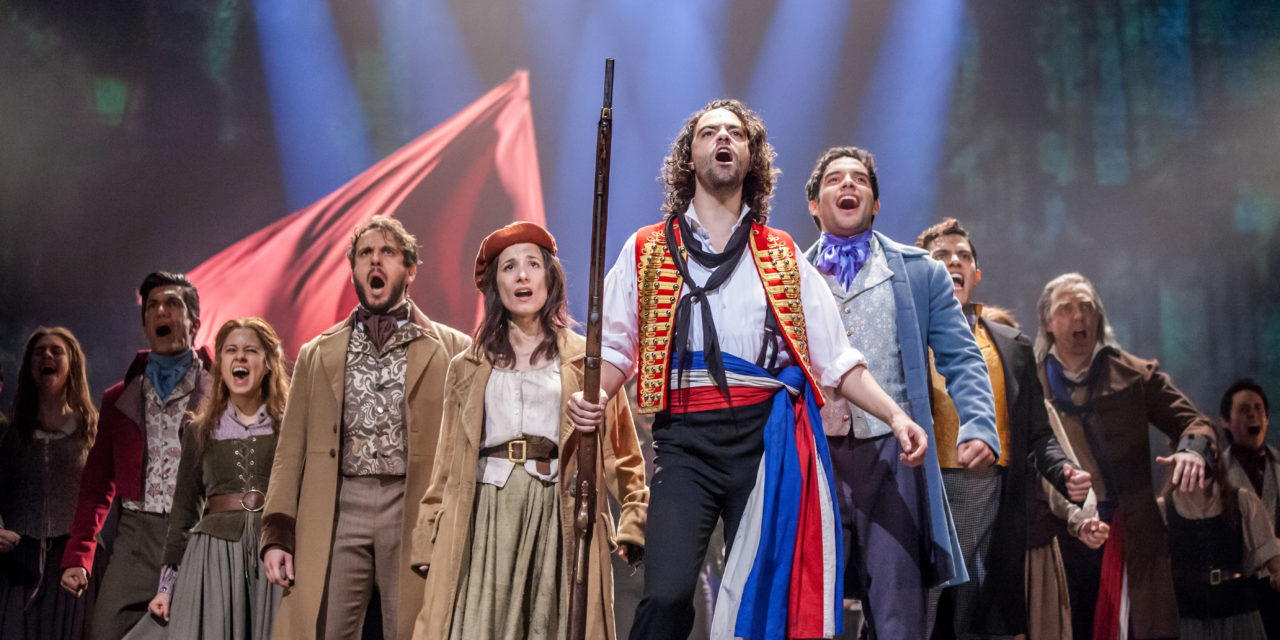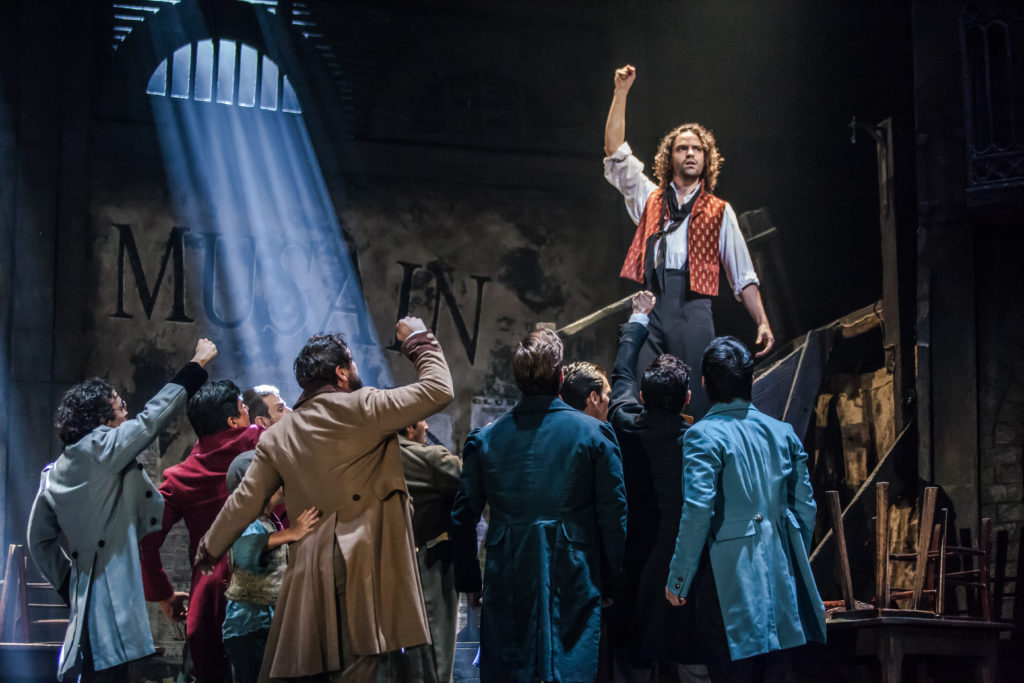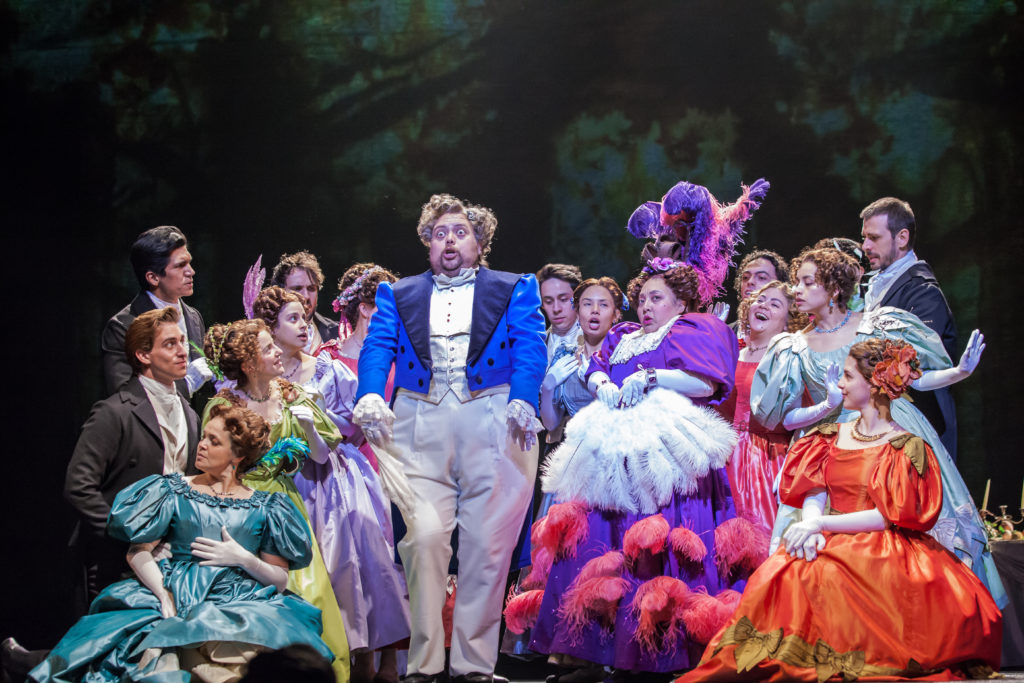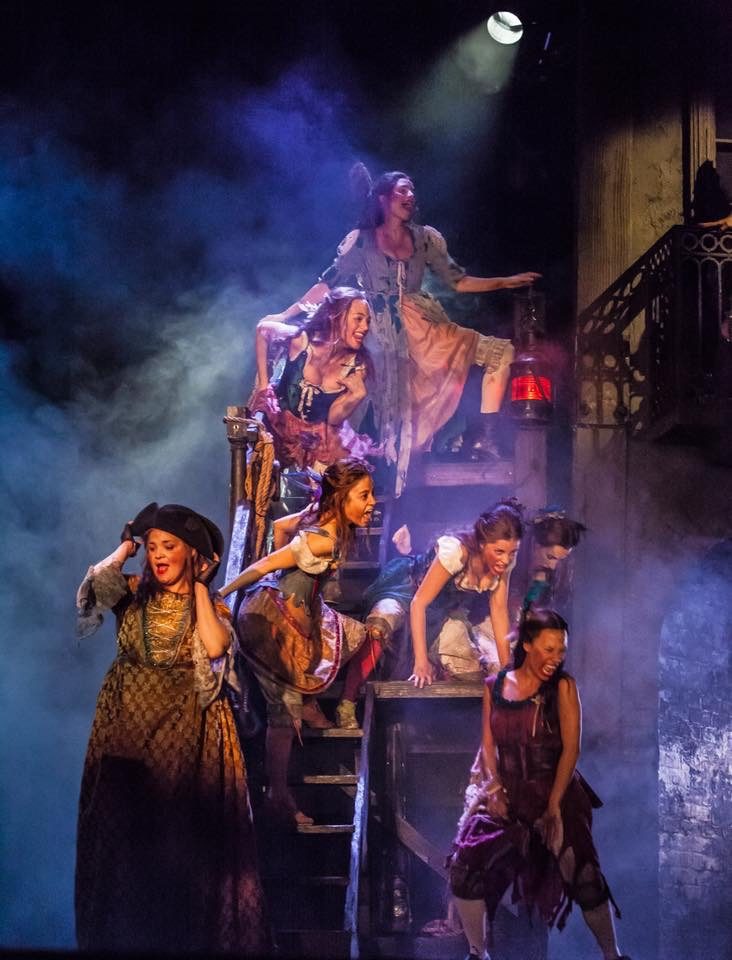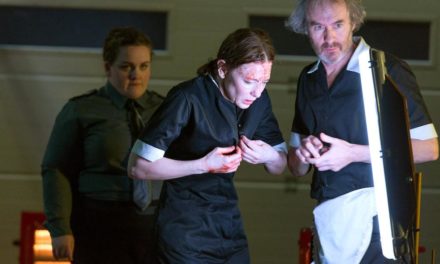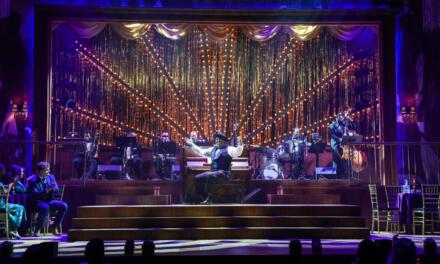Fifteen years after the premiere of the Mexican theatrical mise-en-scène of Les Miserables, it returns to the Telcel Theatre in Mexico City, with an incredible new production.
Federico González Compeán, along with Morris Gilbert and Julieta González, presents us a high-level theatrical production, with an excellent direction, unbelievable set design with a great display of atmospheres, magnificent costumes, impressive make-up, as well as a great sound.
The orchestra performs operatic passages with incredible force reflecting feelings through voices overloaded with sorrow, joy, sadness, and cries of freedom. The cast performs with a mastery of language and rhythm, keeping every scene taut and tense and perfectly timed, where all the members seem to be endowed with bionic lungs, which cover many extended notes of the musical and emotive crescendos of the first-rate singers.
People who come to see this musical will emerge with a feeling of having had a great theatrical dream, living both a macro story, The French Revolution; and a micro story, the history of Jean Valjean, without any spoken dialogue within global stage sensation.
With 52.23 tons of scenery, we witness shocking, overflowing, giant and bizarre scenes of high impact, as well as minimalist effects in the most intimate scenes.
Moving from the splendid barricade to the catacombs, the effects of video mapping magically turn the stage into a magnificent light creation in the attack on the barricades.
The assembly is excellent throbbing, romantic, and makes vibrate the audiences’ soul, in addition to all the members of the cast that have a great performance every minute of the show.
The selection of the cast is part of the success of this play where emotions achieve a perfect emission of every detail that integrates this show. It is composed of 40 actors from various countries, including 28 Mexicans, with a production of almost 100 million pesos, a great orchestra, and 3,000 pieces of costumes that come from Korea, the textiles of each garment have been made with natural fibers: linens, cotton, wool, and silk. Each actor performs between 12 and 15 costume changes resulting in 500 different dresses, and 86 wigs.
The cast
– More than 3,000 actors auditioned and 40 are in the cast.
– Main roles: Daniel Diges (Valjean), Nando Pradho (Javert), Morena Valdés (Fantine), Clara Verdier (Cosette), Daiana Liparoti (Eponine), Agustín Argüello (Marius), Andrés Elvira (Enjolras), Sergio Carranza (Thénardier), and Michelle Rodríguez (Madame Thénardier).
The rest of the cast includes: Leo Wagner, Luigi Vidal, Alex Monge, Manuel Gorka, Mauricio Hernández, Carlos Pérez Banega, Quecho Muñoz, Roberto Hinostroza, Carlos Quezada, Romero Clark, Javier Manente, Luz Aldán, Paola Mingüer, Marisol Meneses, Anaís Loz, Irma Flores, Aitza Terán, María Penella, Lais Lenci, Luis Carlos Villarreal, Erick Sandoval, Gustavo Robles, Estíbalitz Ruiz, and Moni Campos.
The children: María Perroni Garza, Valentina Maldonado Zambrano, Fátima Colín de la Barreda, Jireth Jaquim García, Alexander Tavizón, Alexandre Desvegnes Loyo, and Juan Pablo Hermida Villalpando.
With more than a thousand hours of rehearsals between musicians, technicians, and the cast, each performance of this play takes us back to France of the nineteenth century.
In a few words, Les Miserables is a great epic piece with a great narrative proposal, some heartbreaking interpretations and an incredible interpretative power of all the artists.
The Story
Les Miserables is the masterpiece of the musical theater of Alain Boublil and Claude-Michel Schonberg, based on the novel by writer Victor Hugo published more than 156 years ago.
It is considered one of the great novels of the nineteenth century, a paradigm of French romanticism that analyzes the French society of his time, by reasoning about good and evil, about law, politics, ethics, justice, and the religion.
The play takes place during the events of the June 1832 insurrection, where Victor Hugo presents much of his own political ideology.
It tells an exciting story, where the struggle for freedom and justice is a timeless testimony of great human passions. With some of the most beautiful songs written for musical theater, this epic and inspiring story has become one of the most successful musicals in the history of the theater in the great capitals of the world.
The show takes place in the nineteenth century in France, when Jean Valjean an ex-convict seeking redemption after serving a nineteen-year prison term for stealing a loaf of bread. Unable to find an honest job because of his past, Valjean decides to break his parole in hope of starting a new life under a false identity with the help of a bishop, while suffering the relentless persecution of Inspector Javert over the years, initiating a lifelong struggle for redemption as he is relentlessly pursued by police inspector Javert, who refuses to believe Valjean can change his ways. He becomes an exemplary man who fights against misery and injustice and decides to take charge of Cosette, Fantine’s little daughter, and their lives change forever. Thus, Jean Valjean is forced to change his identity several times.
At the same time, he must elude Commissioner Javert, an inflexible policeman who persecutes him, convinced that he has outstanding accounts with the courts.
Barricades, the interior of a factory, an old neighborhood of Paris, a monastery, and a brothel are just some of the images that manage to create a cinematographic concept within the theater.
Finally, during the Paris student uprising of 1832, Javert must confront his ideals after Valjean spares his life and saves that of the student revolutionary who has captured the heart of Valjean’s adopted daughter.
The History
It has been seen by more than 70 million people around the world and has been presented in 44 countries on 5 continents, including Germany, Argentina, Austria, Australia, Austria, Belgium, Brazil, Canada, China, South Korea, Denmark, Scotland, Spain, United States, Estonia, Philippines, Finland, France, Hong Kong, Hungary, England, Ireland, Iceland, Channel Islands, Israel, Japan, Kuwait, Malta, Mauritius, Mexico, Norway, New Zealand, Countries Netherlands, Poland, United Kingdom, Czech Republic, Dominican Republic, Serbia, Singapore, South Africa, Sweden, and Switzerland.
It has been translated into 22 languages: English, Japanese, Hebrew, Hungarian, Icelandic, Norwegian, German, Polish, Swedish, Dutch, Danish, French, Czech, Spanish, Mauritian Creole, Flemish, Finnish, Portuguese, Estonian, and Spanish in the version Mexicana and Argentina, has received more than 125 awards from international critics and is composed of 28 musical numbers.
The first production of Les Miserables was by Cameron Mackintosh and the Royal Shakespeare Company premiered at the Barbican Center in London on October 8, 1985. The official premiere on Broadway was on March 12, 1987, at the Broadway Theater, with an investment of 4.5 million dollars of which 4 were recovered before the premiere with the pre-sale of tickets. Under the curtain on May 18, 2003, after sixteen years on stage and 6,680 performances.
Only three years after his farewell, Les Miserables returned to the Broadway stages. The revival was on November 9, 2006, at the Broadhurst Theater and, although a limited season of six months was originally scheduled, it closed on January 6, 2008, having performed 463 regular and 17 previous functions.
Les Miserables returned to the Imperial Theater on Broadway on March 23, 2014. With a special assembly to commemorate the 25th anniversary of the musical and under the direction of Laurence Connor and James Powell, set design by Matt Kinley inspired by the paintings of Victor Hugo and ended his season on September 4, 2016.
The different productions of Les Miserables in the world have won a large number of awards and recognitions, including 8 Tonys (Best Musical, Script, Music, Director, Actor and Actress, Lighting and Assembly); Two Grammys (Best Record of a Musical and Symphonic Recording), Oliver Award, and a London Critics Circle Award for Best Musical and Drama Desk Award, among many others.
When Victor Hugo wrote the novel, he used to say that, although he was sure it was not going to be read by everyone, it was meant to be felt by anyone. In a letter to his editor, he wrote:
“Social problems have no borders. The wounds of humanity, those enormous sores that make the world dirty, do not cease to exist between the red and blue lines of the maps. Wherever man manifests in his ignorance or despair, wherever a woman sells herself for bread, wherever a child lacks a book to learn what a warm heart can teach, in these places my book arrives, knocks on the door and says…Open me, I’m here for you. ”
If the purpose of the Greeks in doing theater was to obtain catharsis with Les Miserables this thesis is clearly achieved.
This post was written by the author in their personal capacity.The opinions expressed in this article are the author’s own and do not reflect the view of The Theatre Times, their staff or collaborators.
This post was written by Lorena Meeser.
The views expressed here belong to the author and do not necessarily reflect our views and opinions.

